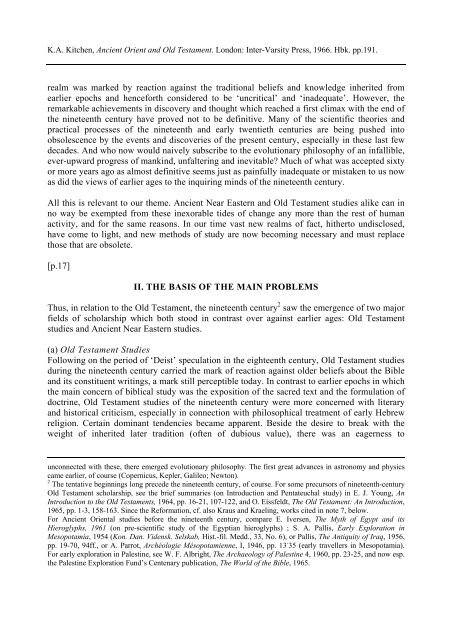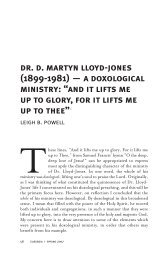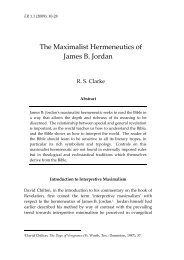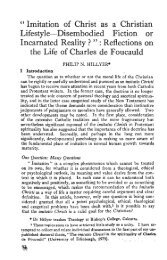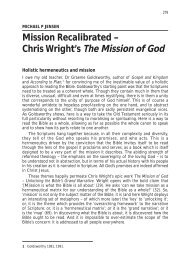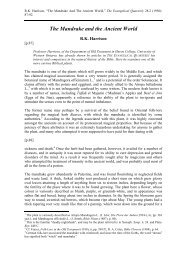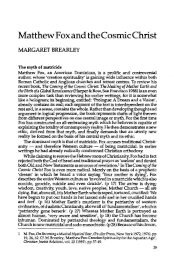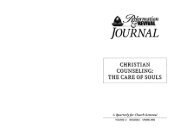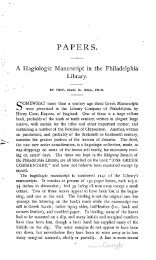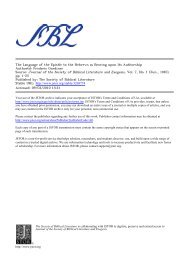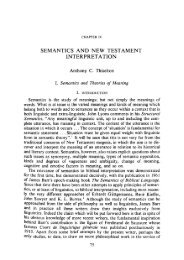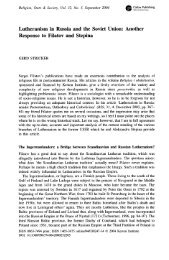Ancient Orient and Old Testament - BiblicalStudies.org.uk
Ancient Orient and Old Testament - BiblicalStudies.org.uk
Ancient Orient and Old Testament - BiblicalStudies.org.uk
You also want an ePaper? Increase the reach of your titles
YUMPU automatically turns print PDFs into web optimized ePapers that Google loves.
K.A. Kitchen, <strong>Ancient</strong> <strong>Orient</strong> <strong>and</strong> <strong>Old</strong> <strong>Testament</strong>. London: Inter-Varsity Press, 1966. Hbk. pp.191.<br />
realm was marked by reaction against the traditional beliefs <strong>and</strong> knowledge inherited from<br />
earlier epochs <strong>and</strong> henceforth considered to be ‘uncritical’ <strong>and</strong> ‘inadequate’. However, the<br />
remarkable achievements in discovery <strong>and</strong> thought which reached a first climax with the end of<br />
the nineteenth century have proved not to be definitive. Many of the scientific theories <strong>and</strong><br />
practical processes of the nineteenth <strong>and</strong> early twentieth centuries are being pushed into<br />
obsolescence by the events <strong>and</strong> discoveries of the present century, especially in these last few<br />
decades. And who now would naively subscribe to the evolutionary philosophy of an infallible,<br />
ever-upward progress of mankind, unfaltering <strong>and</strong> inevitable? Much of what was accepted sixty<br />
or more years ago as almost definitive seems just as painfully inadequate or mistaken to us now<br />
as did the views of earlier ages to the inquiring minds of the nineteenth century.<br />
All this is relevant to our theme. <strong>Ancient</strong> Near Eastern <strong>and</strong> <strong>Old</strong> <strong>Testament</strong> studies alike can in<br />
no way be exempted from these inexorable tides of change any more than the rest of human<br />
activity, <strong>and</strong> for the same reasons. In our time vast new realms of fact, hitherto undisclosed,<br />
have come to light, <strong>and</strong> new methods of study are now becoming necessary <strong>and</strong> must replace<br />
those that are obsolete.<br />
[p.17]<br />
II. THE BASIS OF THE MAIN PROBLEMS<br />
Thus, in relation to the <strong>Old</strong> <strong>Testament</strong>, the nineteenth century 2 saw the emergence of two major<br />
fields of scholarship which both stood in contrast over against earlier ages: <strong>Old</strong> <strong>Testament</strong><br />
studies <strong>and</strong> <strong>Ancient</strong> Near Eastern studies.<br />
(a) <strong>Old</strong> <strong>Testament</strong> Studies<br />
Following on the period of ‘Deist’ speculation in the eighteenth century, <strong>Old</strong> <strong>Testament</strong> studies<br />
during the nineteenth century carried the mark of reaction against older beliefs about the Bible<br />
<strong>and</strong> its constituent writings, a mark still perceptible today. In contrast to earlier epochs in which<br />
the main concern of biblical study was the exposition of the sacred text <strong>and</strong> the formulation of<br />
doctrine, <strong>Old</strong> <strong>Testament</strong> studies of the nineteenth century were more concerned with literary<br />
<strong>and</strong> historical criticism, especially in connection with philosophical treatment of early Hebrew<br />
religion. Certain dominant tendencies became apparent. Beside the desire to break with the<br />
weight of inherited later tradition (often of dubious value), there was an eagerness to<br />
unconnected with these, there emerged evolutionary philosophy. The first great advances in astronomy <strong>and</strong> physics<br />
came earlier, of course (Copernicus, Kepler, Galileo; Newton).<br />
2 The tentative beginnings long precede the nineteenth century, of course. For some precursors of nineteenth-century<br />
<strong>Old</strong> <strong>Testament</strong> scholarship, see the brief summaries (on Introduction <strong>and</strong> Pentateuchal study) in E. J. Young, An<br />
Introduction to the <strong>Old</strong> <strong>Testament</strong>s, 1964, pp. 16-21, 107-122, <strong>and</strong> O. Eissfeldt, The <strong>Old</strong> <strong>Testament</strong>: An Introduction,<br />
1965, pp. 1-3, 158-163. Since the Reformation, cf. also Kraus <strong>and</strong> Kraeling, works cited in note 7, below.<br />
For <strong>Ancient</strong> <strong>Orient</strong>al studies before the nineteenth century, compare E. Iversen, The Myth of Egypt <strong>and</strong> its<br />
Hieroglyphs, 1961 (on pre-scientific study of the Egyptian hieroglyphs) ; S. A. Pallis, Early Exploration in<br />
Mesopotamia, 1954 (Kon. Dan. Vidensk. Selskab, Hist.-fil. Medd., 33, No. 6), or Pallis, The Antiquity of Iraq, 1956,<br />
pp. 19-70, 94ff., or A. Parrot, Archéologie Mésopotamienne, I, 1946, pp. 13 - 35 (early travellers in Mesopotamia).<br />
For early exploration in Palestine, see W. F. Albright, The Archaeology of Palestine 4, 1960, pp. 23-25, <strong>and</strong> now esp.<br />
the Palestine Exploration Fund’s Centenary publication, The World of the Bible, 1965.


